D-Locus Rabbit Colors
D-locus rabbit colors. Rabbit coat color genetics information pertaining to the 2 D locus rabbit color genes carried by domestic rabbits.
The D-locus is fairly uncomplicated, since there are just two options for rabbit color at the D-locus - dense, and dilute.
‘D’ stands for dense color. ‘D’ is completely dominant.
‘d’ stands for dilute. ‘d’ is completely recessive.
There has been just one mutation at the D-locus. A defect
occurred in the production of a protein essential to carrying pigment molecules
to their permanent homes as the fetus develops. Therefore, in 'dd' dilute
rabbits, only a partial load of pigment is put into place over the body of the
little fetus. This results in:
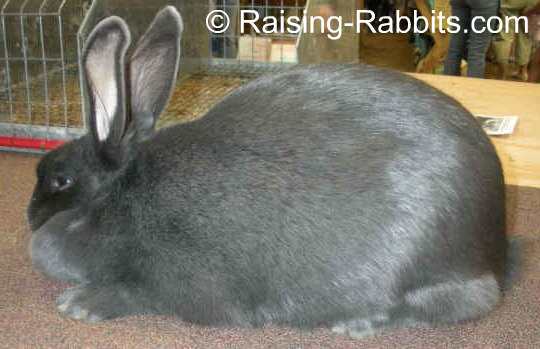 Blue American Rabbit
Blue American Rabbit- An obvious decrease in the intensity of
color. Black becomes blue. Chocolate becomes lilac.
- The dilution occurs in eye coloration as well.
Dark brown eyes are diluted to gray-blue. The ruby-casted brown eyes in chocolates become
ruby-casted gray-blue eyes.
- It’s not like dumping a can of white paint into the black
paint and ending up with gray paint. The mutation does not change the chemical
composition of the pigment itself, only the effectiveness of its transport.
The number of molecules that end up actually containing that pigment is
reduced, therefore the rabbit’s color ends up looking faded, which is actually
quite nice.
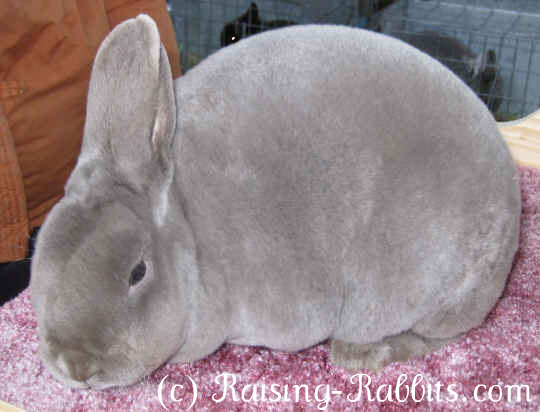 Self lilac mini rex rabbit, which is a dilute chocolate
Self lilac mini rex rabbit, which is a dilute chocolate- Since the dilute ‘d’ is completely recessive, any dilute rabbit must have received a ‘d’ from each parent, and must carry a genotype of ‘dd.’
- Black and chocolate rabbits
carry either DD or Dd at the D-locus.
- With a double ‘dd,’ the black becomes
grayish-blue, known as blue (see blue American rabbit above). The chocolate gene dilutes to a pinkish-dove-gray, known as lilac.
- Black otters become blue otters.
- The rabbits pictured above are Otter Rex Rabbit siblings. The
Black Otter is 'D_;' the Blue Otter is
'dd.' This blue otter's genotype can be written in full: at_BBCCddEE
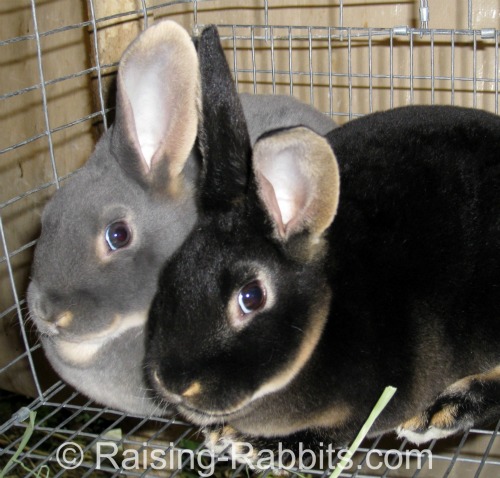 Full color black otter; dilute blue otter
Full color black otter; dilute blue otter- Chestnut agoutis, also called black agoutis (such
as castor in Rex) become blue agoutis, also called
opals
- Chocolate agoutis become lilac agoutis (lynx)
Because both black and chocolate can be diluted, there are a
total of 4 D-locus rabbit colors....
4 D-Locus rabbit Colors: Black, Chocolate, Blue, Lilac
Every domestic rabbit comes in one of these 4 D-locus rabbit colors, of course modified by its other other pattern (A), color (C), and extension (E) genes.
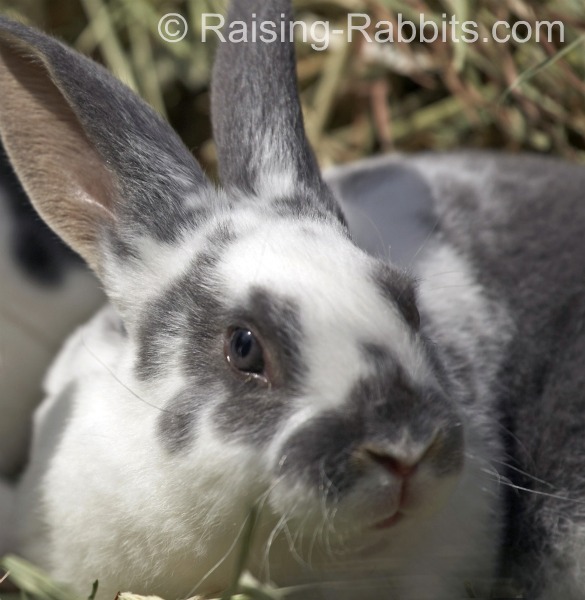 You can clearly see the gray-blue eyes of this broken blue
otter rex rabbit.
You can clearly see the gray-blue eyes of this broken blue
otter rex rabbit.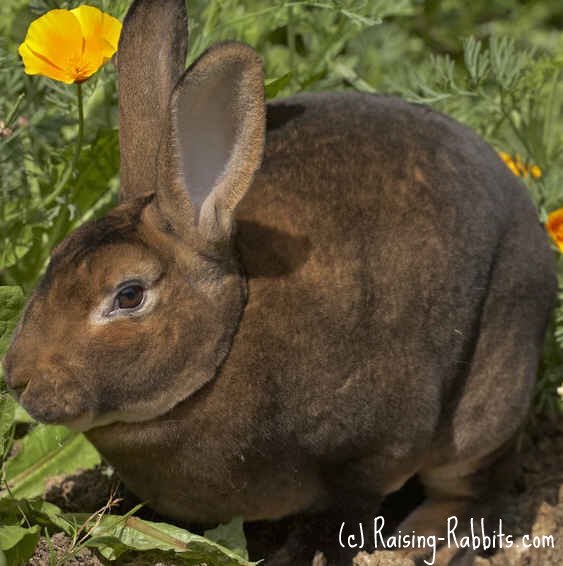 Chestnut agouti rabbit, called 'castor' in the Rex breed. Chestnut agoutis carry full density, or 'D_'
Chestnut agouti rabbit, called 'castor' in the Rex breed. Chestnut agoutis carry full density, or 'D_'Is your Lynx Rabbit a Lilac Agouti
or a Smutty
Fawn?
The term 'lynx' has traditionally been applied to the lilac
agouti genotype, especially in the standard Rex breed.
But in some USA breed standards, including the Rex rabbit, both lilac agouti and smutty fawn rabbits are shown as lynx, and the smutty fawn more closely matches the lynx description than does the lilac agouti rabbit.
- A lilac agouti (lynx) is: A_bbC_ddE_
This is an agouti animal with lilac tipping over a rich fawn middle ring. This animal also has a slate blue undercolor, even on the belly as does every agouti animal with full extension (E_) of color. (Note that the Rex standard for 'lynx' disqualifies a slate blue undercolor...oops!) - A smutty fawn (bred to match the lynx phenotype)
is: A_B_C_ddee + smut modifiers - may be lilac-based, but
most likely is blue-based.
This is a blue agouti animal with the double-recessive non-extension 'ee' genes, that wipe out all the blue on an otherwise agouti animal. The non-extension 'ee' also eliminates the slate blue undercolor, leaving just white on the belly (matching the standard). Yet just as in self non-extension torts which have a considerable amount of remaining black smut, smutty blue fawns in the USA have been bred over years to allow modifiers that permit a dusting of blue smut over the entire colored portion of the rabbit.
And yes -- they look almost exactly like a lilac agouti ... until you blow into that belly and find nuthin' but white.
Currently the best commercial rabbit food available in the USA:
Right now, the term 'lynx' is really a phenotype description toward which there are two genetic paths (more or less). Breeders are successfully showing both of the above genotypes.
You need to know which of your lynx rabbits is which, so that your breeding program will go in the direction you intend it to go.
To help determine the genotype, take a look at the pedigree. If you see black-based animals such as:
- chestnut agouti (castor)
- opal
- black
- red
- fawn
...your lynx likely has a smutty fawn genotype and a white belly to the skin.
If the pedigree contains chocolate based animals such as:
- chocolate agouti (amber)
- chocolate
- lilac
...your lynx may be a true lilac agouti lynx.
But test-breeding will tell you the real truth about D-locus rabbit colors and which type of lynx you have. If you breed to a chocolate or a chocolate agouti and get NO chocolate-based rabbits, the likelihood dramatically increases that the animal in question is a blue-based smutty fawn.
Double-Value Guarantee
Our policy is to always OVER-deliver
on value,
which is why your purchase is fully covered by our
Double-Value
Guarantee.
Go ahead - take any of our e-books for a test drive. Peruse our detailed informational and educational e-books. Examine our plans for building rabbit cages, runs, or metal or PVC hutch frames. Check out the Rabbit Husbandry info e-books.
If you aren't completely satisfied that your e-book purchase is worth at least double, triple or even quadruple the price you paid, just drop us a note within 45 days, and we'll refund you the entire cost. That's our Double-Value Guarantee.
Note: When you purchase your
e-books, they will be in PDF format, so you can download them to any device that
supports PDF format. We advise making a back-up copy to a drive or cloud
account. If the books are lost, you can also purchase another copy from Raising-Rabbits.
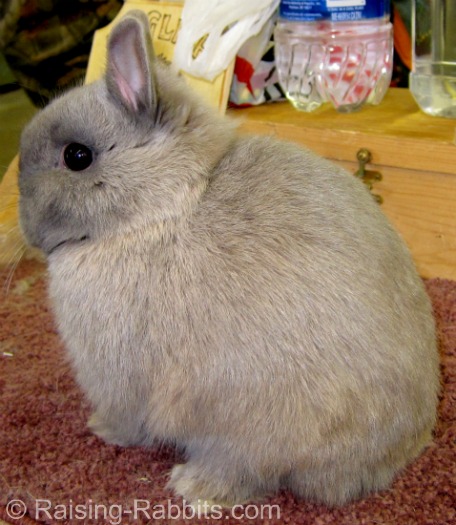





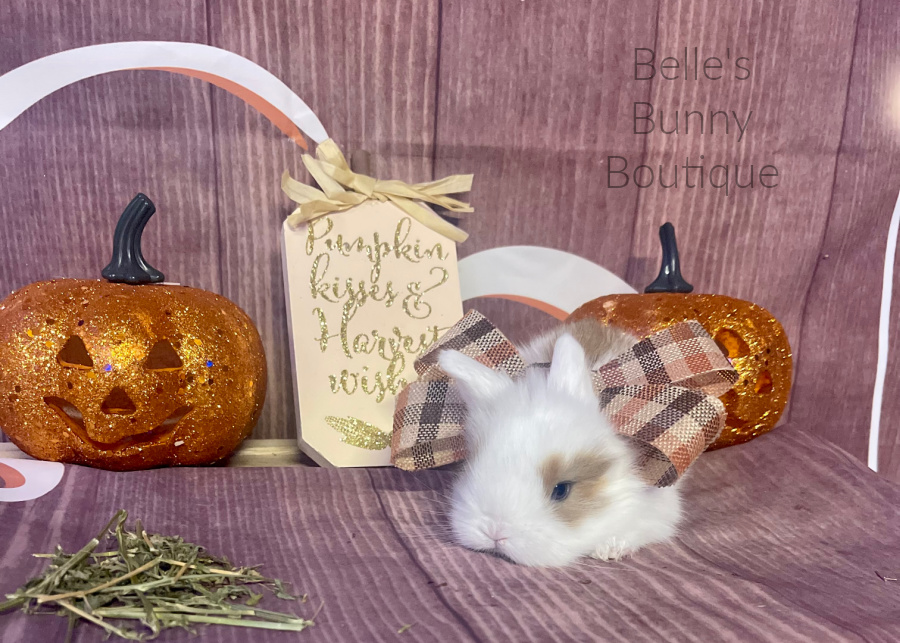
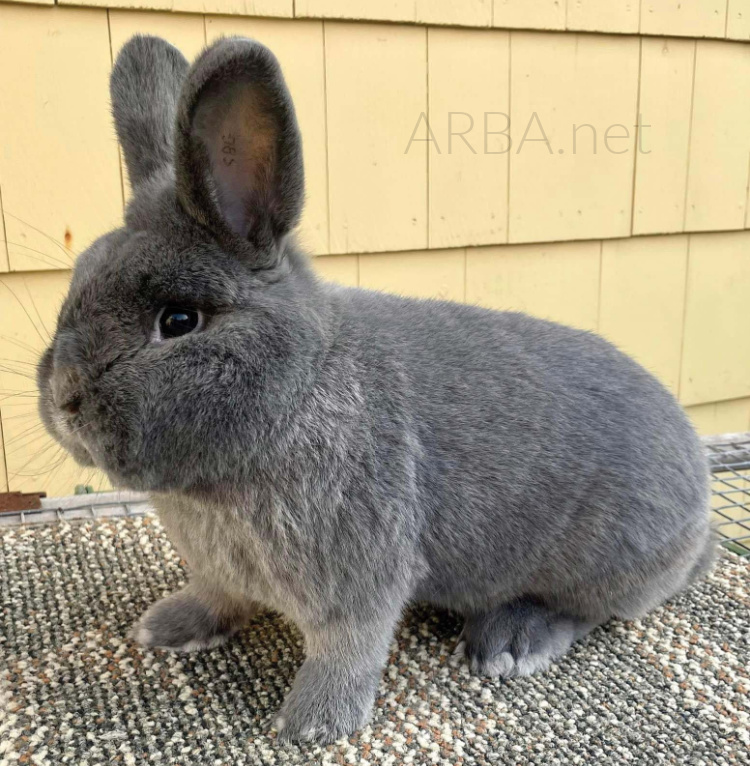


New! Comments
Have your say about what you just read! Leave me a comment in the box below.